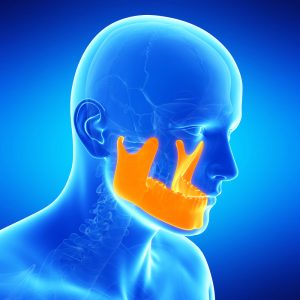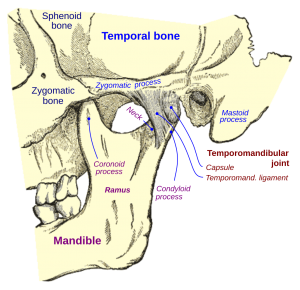Levels damage: Managing damage
- Mild damage Dentist
- Mod damage Orofacial refer
- Severe damage Orofacial refer
Conservative therapies should always be implemented by dentist in mild levels damage:
- Medical Insurance recommends conservative therapy (CT)
- CT Implementation helps w/ referral to orofacial pain
- Conservative therapy not reducing pain Indicates moderate damage
- CT then referral helps patient parent make wise decisions
- Patient discovers jaw pain is more dental
- Conservative therapy reduces pain muscle & minor TMD
Early or Mild damage Chewing system: 1) Muscle: sore, ache, tight, stiff 2) Episodic sensitivity 3) Chewing discomfort 4) Tooth damage: wear-crack-broken teeth 5) Muscle damage: enlarge muscle, trigger PTSD 6) Mild to moderate stress
Conservative therapy for mild jaw joint damage Avoid chewing gum 1) Hot compress 2) Low chew diet 3) Massage jaw muscle 4) Ibuprofen 3-4 per day 5) Relax-quiet time-prayer 6) Bite cotton square
Second line defense for muscle or mild TMD damage 1) NTI TEST for 1 week 2) Muscle relaxant & Ibu for week 3) Medical massage-Head/Neck
Moderate damage TMD 1) Restricted opening 2) Moderate chew pain 3) neck pain & Headaches 4) moderate anxiety 5) Comorbid: IBS, Fibro, Bipolar, PTSD, Allergies, Drug sensitive 6) Facial Asymmetry 7) Deviation opening 8) Jaw damage & need braces 9) Multiple bites
Sensitivity Therapy: 1) Paint 2) Occlusal adj 3) Cervical fillin 4) Biteguard 5) Crown 6) Explore Filling - look crack 7) Refill -extra pulp base-paint 8) Equilibration-1 tooth 9 ) Sensitive toothpaste 10) Flouride trays
Therapies recommend in past for jaw pain: single treatments are rarely effective on complex joint or chronic pain 1) Wisdom tooth extraction 2) Braces 3) Botox 4 )Equilibration 5) Biteguards 6) ARS 7) Chiropractic 8) Clean wax in ears 9) Nightguards 10) NTI 11) Opioids 12) Dental: CR-RC-Ext 13) Braces
Why dentistry Blamed TMD on teeth
- 1st group to study jaw pain was dentist
- Dental bias: dentist see teeth, plumber sees pipes
- Dentist suspected cause was occlusion
- 30 years study proved not occlusion
- Jaw joint & muscle damage became focus
- Joint & muscle science is orthopedics
- Orthopedics is medical
- Training in muscles & joint health is not part of dental school
Why surgery failed to manage damaged TMD in past ?
- Surgeons focused on damage, not cause
- Surgery focus on joint, ligaments, retrodiscal tissue
- Muscle damage was not concern surgeons
- Temporomandibular joint & meniscus is a complex joint
- At time, we lack research on how lateral lateral ligament of disc got torn
- 4 main causes of tearing were not managed before surgery a) Tension muscles b) Grinding/clenching c) Trauma’s d) Head n Neck pain
- If 4 main causes can tear a healthy lateral ligament, it can tear suture line
- Solution: manage cause of tearing ligament to disc before surgery, then the surgery to recapture the meniscus (disc) would have been successful
Treatments inadequate
- Meniscus plication: treats damage not cause
- Invisalign, bracket/braces: treat alignment teeth, not cause disc damage
- Equilibration: treatment of interferences are not powerful clenching reducer
- Botox: paralysis chewing muscle, the causes continue, injection are repeated until run out money
- Chiropractic: treats neck to reduce jaw contraction, the activator or cervical therapy are not adequate to manage displaced disc alone
- Wisdom tooth removal: open mouth procedure will aggravates jaw pain
Jaw joint damage causes bite problems
- Loss of bone in TMD causes teeth hit harder on that side
- Sudden loss disc causes teeth hit harder on that side
- TMD is a 3 legged stool: 2 joints & teeth as whole; loss space one jaw joint (side stool) causes lean to that side, loading posterior teeth on that side
What we have learned in last 30 years
- We spent 30 years trying prove teeth cause jaw joint damage
- Teeth are not primary cause of jaw damage
- Tension muscles-parafunction-traumas-Head/Neck pain are primary causes TMD
- Secondary causes: occlusion, dual bites, pain escalation, open locking
- Dentistry called it "TMD" in beginning: do not call a disease the name of joint
- "TMD" caused confusion to insurance, public, dentist, medical professionals
- Joint muscle damage is orthopedics, which is medical
- Study of orthopedics in TMD
- What recruits Lateral Pterygoid muscle that fatigues ligament
- Progressive tearing lateral ligament of disc
- Forward pull Superior Lateral Pterygoid tears Lat Ligament
- Tearing lateral ligaement allows displacement disc
- Disc displaces forward & medially slowly over years
- Causes eventually complete displace disc, or restricted opening
- Displaced disc causes pain chewing pain, bite changes, restricted openings, atypical toothache, atypical earache, deviation opening, etc
Botox (covers up causes muscle pain)
- Patient Demand for quick fix
- Paralazy muscle for 3 months
- Treats symptom: muscle spasms
- Does not treat causes
- Dependance on drugs
- Same kind thinking got us opioid crisis
Equilibration
- Successful eliminates interferences
- Interferences aggravates grind/clench, but does not cause it
- Multiple open mouth procedures to equilibrate aggravates jaw pain
- Treats interference: a minor cause muscle contraction
- Does not treat major causes: tension, parafunction, trauma, head & neck pain
- CR=/=CO, Jaw jt bite vs tooth bite, or dual bites (are all referring to TMD hypermobility)
- 40 years study Pankey & Dawson just to write that last sentence
LVI-ARS
- Moves condyle downward & forward
- Theory was move condyle back into center disc
- Places condyle on slick incline held there by muscles
- Muscle bracing causes extra pull on tearing ligament of the disc
- Forward jaw caused posterior open bite
- Posterior open bite causes need crowns or braces
- Teeth were place in unstable jaw joint position
- High anxiety causing excessive muscle pull lateral ligament disc
- No appliance is ever capable of managing the complexity of jaw joint-disc-muscles
Braces for TMD
- Position of teeth does not cause TMD
- Tooth movement creates interferences
- Interferences increase clenching grinding
- Increase muscle bracing & muscle posturing
- Position teeth is minor effect on clenching
- Great cosmetics but painful chewing is unacceptable
- Stabilizing jaw joint/muscles is necessary before braces
- A stabilize chewing system navigates braces quite well
Atypical Toothache 1) 7 to 12 % of toothaches not pulp tooth 2) 7 reasons for toothache 3) When tooth is not directed indicated be cause pain, think atypical toothache 4) 3 difficult diagnose: a) outside nerve, b) muscle referred, and joint space loss loading 5) refer OFP to serve as diagnostic clearinghouse 6) other 3 are rare pathologies refer into teeth



